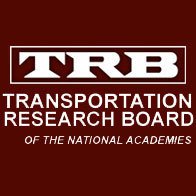
Global Navigation Satellite Systems (GNSS) have tremendous impact and potential in the development of Intelligent Transportation Systems (ITS) and mobility services, expected to deliver significant benefits including increasing capacity, improving safety and decreasing pollution. There are, however, situations where there might not be direct location information about the vehicles, such as in tunnels, but also in indoor facilities, such as parking garages and commercial vehicle depots. Various technologies can be used for vehicle localization in these cases, while other sensors, which are currently available in most modern smartphones, such as accelerometers and gyroscopes, can be used to directly obtain information about the driving patterns of the individual drivers. The use of multiple, diverse technologies for localization in the context of indoor and harsh environments has seen a lot of interest in the literature recently. The objective of this research is to present a framework for the vehicle localization and monitoring and modeling of driving behavior in indoor facilities, or –more generally– facilities where GNSS information is not available. A survey of localization technologies and needs is presented, leading to the description of the adopted methodology. The case studies, using data from multiple types of sensors (including accelerometers and gyroscopes from two smartphone platforms, as well as two reference platforms), provide evidence that the opportunistic smartphone sensors can be useful in identifying events (i.e. speed-humps) and maneuvers (i.e. u-turns and sharp-turns), which can be useful in positioning the vehicles in indoor environments, when cross-referenced with a digital map of the facility. At a more macroscopic level, a methodology is presented and applied to determine the optimal number of clusters for the drivers’ behavior, using a mix of suitable indices.
| ID | pj104 |
| Manuscript | |
| DOI | |
| Tags | driver behaviour, intelligent systems, telematics |













